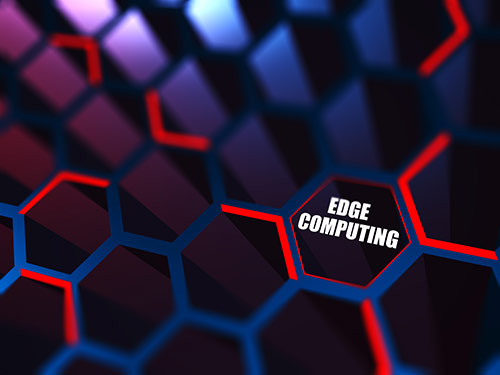Edge computing is strategic. The IT channel is huge. Insider cyber risks deserve more attention. AI can be used to oversee AI. And enterprises are buying more wireless LANs.
That’s the latest from top IT market research. And here’s your Performance Intensive Computing roundup.
All hail the edge
More than 8 in 10 C-level executives (83%) believe that to remain competitive in the future, their organizations will need to implement edge computing.
Nearly as many (81%) believe that if they fail to act quickly on edge computing, they could be locked out from enjoying the technology’s full benefits.
Those figures come from a new study by Accenture. The report is based on a poll, conducted by the consulting firm late last year, of 2,100 C-suite execs—including 250 CEOs—across 18 industries and 16 countries.
There’s plenty of room for progress on the edge, the Accenture poll finds. Just two-thirds (65%) of companies use edge today. And among these adopters, only half have integrated edge into their digital core.
Edge systems can be enhanced with the cloud. Indeed, Accenture finds that nearly 8 in 10 respondents (79%) say they’ll fully integrate edge with cloud in the next three years.
Channel rules
How important is the IT channel? Very, according to market watcher Canalys.
Canalys expects that this year, partner-delivered IT technologies and services worldwide will total more than $3.4 trillion, or about 70% of the global addressable IT market.
And the market is rising, despite ongoing economic issues. Canalys predicts the worldwide IT market will rise 3.5% this year, for a full-year total of $4.7 trillion.
Some of the biggest growth opportunities this year coming in cybersecurity (with sales forecast to rise 11%), network infrastructure (14%) and public cloud (7.5%), according to Canalys.
There are also big implications for the IT hardware, software and services suppliers that rely on the channel.
“Given the importance of the channel,” says Canalys chief analyst Matthew Ball, “the success of vendors will increasingly rely on their resell, co-sell, co-marketing, co-retention, co-development and co-innovation strategies.”
Insider risk rising
Here’s a new reason to worry: The average annual cost of an insider cyber risk has risen 40% over the last 4 years, reaching $16.2 million. And the average amount of time it takes to contain an insider incident is now a about 3 months (86 days).
That’s according to a new study conducted by the Ponemon Institute on behalf of Dtex Systems, a supplier of risk-management software. Their new joint report is based on a recent survey of 1,075 security and line-of-business professionals at nearly 310 organizations worldwide.
Despite this risk, the survey finds that most organizations are dedicating only about 8% of their overall cybersec budget—the equivalent of $200 per employee—to insider threats.
What’s more, about 90% of the insider-risk budget gets spent after an insider incident has occurred, the survey found. These after-incident costs include containment, remediation, investigation, incident response and escalation.
AI vs. AI?
AI-powered risks may be so stealthy, only another AI system can fight them off.
That’s the sentiment revealed by a new Gartner survey. The research firm finds that about 1 in 3 organizations (34%) now use AI application security tools to mitigate the risks of generative AI. Over half (56%) are exploring such approaches for the future.
These numbers come from Gartner’s most recent Peer Community survey, conducted in April. Gartner collected responses from 150 IT and cybersecurity leaders at organizations that use either GenAI or foundational models.
When asked which risks of GenAI worry them the most, nearly 6 in 10 respondents (57%) said leaked secrets in AI-generated code. About the same number (58%) said they’re concerned about AI generating incorrect or biased outputs.
“Organizations that don’t manage AI risk will witness their models not performing as intended,” says Gartner analyst Avivah Litan. “In the worst case [AI] can cause human or property damage.”
Enterprise wireless LAN heats up
Looking for a new growth market? Consider the enterprise segment of wireless local area networking. In this year’s second quarter, sales in this sector grew 43%, reaching a total of $3 billion, according to market intelligence firm IDC.
The growth rate was even higher in both the United States and Canada. In both countries, Q2 sales of wireless LANs to enterprises rose nearly 80% year-on-year, IDC says.
By contrast, the consumer end of the wireless LAN market declined by 14% year-on-year in Q2, according to IDC.
Driving the enterprise sales are a couple of factors, including an easing of both components shortages and supply-chain disruptions, says IDC researcher Brandon Butler. Another growth factor is the rapid adoption by enterprises of the new Wi-Fi 6 and 6E standards.



